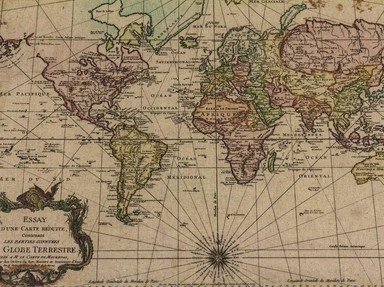Quiz Answer Key and Fun Facts
1. Taking a desperate yet futile last stand against the besieging Romans, Vercingetorix stationed his Gallic troops in this stronghold located atop a hill. After a six-week long battle, Vercingetorix finally succumbed to the might of the Roman army. Where is this stronghold located?
2. Founded around 780 AD, Kaupang was an important trading outpost during the Viking Era. It was also considered to be the foremost urban settlement in this country. In which country is Kaupang located?
3. Revered by Buddhists as the birthplace of Siddhartha Gautama in 563 BC, this site became a pilgrimage stop for Buddhists like Emperor Ashoka of the Mauyra Dynasty and also the Chinese monk Fa Xian. What is the name of the site?
4. Near the Hiranyavati River, there was a small city which was said to be where Buddha reached Parinirvana upon his death. Buildings such as Ramabhar Stupa and Mahaparinirvana Temple were found there. Which city is this?
5. Rising up against Roman rule, a powerful Arab warrior-queen known as Queen Mavia conducted guerrilla warfare and destructive raids against the Roman Empire. She died in 425 AD and was buried in a village called Anasartha. Where is Anasartha located?
6. Slithering for a distance of more than 195 km, the Red Snake was so-called due to its red-coloured bricks. More commonly known as the Great Wall of Gorgan, it was also the second longest wall in the world. Where can one find the Great Wall of Gorgan?
7. This settlement, located in the Mexican state of Chiapas, was prominent around 850 BC. It was believed to be the transitional phase between the earlier Olmec Civilisation and the later Maya Civilisation. It declined sometime in 100 AD. What was the name of this settlement?
8. A royal estate known as Hadrian's Villa incorporated different architectural and cultural influences from across the Roman Empire into its construction. In which Italian city was Hadrian's Villa located?
9. A love that ran deep made Emperor Hadrian built a city where his lover, Antinous, died in 130 AD. Known as Antinopolis, it became the cult centre where Antinous was deified and worshiped. In which country is Antinopolis located?
10. This island stronghold located in Greece was fortified by the Venetians as a defensive system against the Ottoman Empire and Arab pirates around the 16th century AD. During the early 20th century AD, it was used as a leper colony. What island stronghold was this?
Source: Author
knightmyst
This quiz was reviewed by FunTrivia editor
Pagiedamon before going online.
Any errors found in FunTrivia content are routinely corrected through our feedback system.

